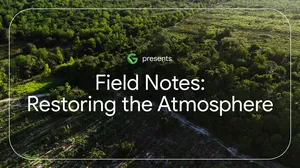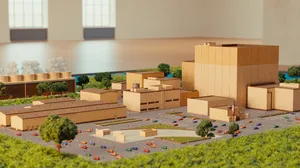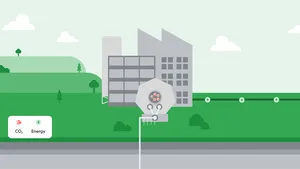How we’re using AI to help nature and people flourish together

Thriving ecosystems power thriving communities. From the food we eat to the future of our economies, human wellbeing and opportunity are deeply tied to the health of our planet.
But these vital natural systems are at risk. The World Wildlife Fund estimates that wildlife populations have declined by 73% since 1970, and the World Economic Forum ranks biodiversity loss as one of the greatest risks to global stability over the next ten years.
For more than two decades, we’ve been providing a clearer view of our changing planet with tools like Google Earth and Google Earth Engine. Building on that foundation, we’re working harder than ever to help support the worldwide initiative to protect and conserve 30% of the planet’s land and oceans by 2030 (30x30), leveraging environmental data and AI technologies to help nature and people flourish together.
Three ways we’re accelerating global action for our planet
We believe AI offers a tremendous opportunity to empower people everywhere to protect and restore nature. Here are three ways we're helping.
1. Visualizing our planet and connecting the dots
You can't protect what you can't see. We're building technologies that can give everyone an unprecedented view of our planet by turning petabytes of satellite, climate and ecosystem data into a single, consistent picture of change.
Our recently-launched Google Earth AI is built on decades modeling the world, combined with state of the art predictive models and Gemini’s advanced reasoning capabilities, enabling enterprises, cities and nonprofits to achieve deeper understanding of our planet. In minutes, users can create powerful insights that previously required complex analytics and years of research. For example, EarthAI’s Geospatial Reasoning capability can automatically connect different models — like weather forecasts, population maps and satellite imagery — to tackle complex analyses like spotting where a river has dried up to help communities predict the risk of dust storms during a drought and take action to prepare in advance.
2. Understanding the past, present and future of our planet
Our researchers are using cutting-edge AI approaches to synthesize complex data and reveal new insights into the past, present and future of our planet. Our Species Distribution Modeling project, for example, uses AI to create high-resolution maps of where species live, helping conservationists make critical decisions like how to best protect endangered wildlife and their habitats.
In addition to helping us better understand the natural world in real-time, AI is also enabling us to forecast its future. For example, we just released a new paper and the first dataset dedicated to training deep learning models to predict deforestation risk, opening the door to opportunities to prevent deforestation before it happens.
3. Putting technology in the hands of local experts
We believe technology’s greatest potential is realized when it empowers local communities and puts powerful tools in the hands of those who can drive on-the-ground impact. That's why we partner with people on the front lines to help accelerate their work.
Through Google Arts & Culture’s Forest Listeners experiment, we’re inviting everyone to help scientists identify hidden species by listening to sounds from Brazil’s rainforests and classifying the data they hear to help train Google DeepMind’s AI model. This helps enable measurement, preservation and restoration of the rainforests’ biodiversity. And through Google.org, we’re supporting eight Brazilian organizations who are using AI to do everything from predicting Amazonian wildfires to mapping biodiversity with eDNA.
These efforts build on our commitment to deliver the benefits of AI for people and the planet while managing its environmental footprint responsibly — by continuing to improve efficiency across our AI systems, investing in next-generation clean energy sources, and supporting carbon removal projects that push the frontier of science and technology to help restore the atmosphere while creating co-benefits for local communities and ecosystems.
Get involved and learn more
AI is not just a tool, it’s a catalyst — and it's the partnership between AI technology and human passion that will drive real change. We invite you to dive deeper into this work:
- See the thinking behind our solutions in this video playlist.
- Read our recent paper on AI for Nature, co-authored with WRI.
- Explore the Forest Listeners experiment and help support biodiversity with AI tools.







